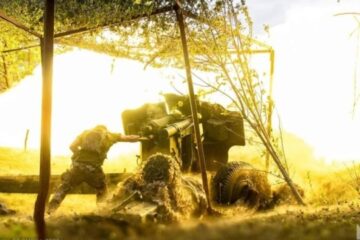The recent history of the Armed Forces of Ukraine (AFU) is the record of an amazing path through transformations to victories. Currently 91.5% of the Ukrainians have trust in their army!
On December 6, Ukraine marks its national Day of the Armed Forces, celebrating its army’s dedication, strength and bravery. Over the past 33 years of its recent history, the Ukrainian army has passed the way from severe deterioration to rapid revival amid war. This article is about the transformations the AFU has undergone over the time from independence to this day.
On August 24, 1991, Ukraine’s parliament, the Verkhovna Rada enacted a resolution “On Military Formations in Ukraine”. This took jurisdiction over all formations of the armed forces of the Soviet Union stationed on Ukrainian soil, established one of the key agencies, the Ministry of Defense of Ukraine, and instructed the Government of Ukraine to commence building the national armed forces in Ukraine”. On 3 September 1991, the Ministry of Defense commenced its duties. This actually kicked off the building of national armed forces as an integral part of the state machinery. The Verkhovna Rada adopted two Laws of Ukraine on 6 December 1991 regarding the creation of the Armed Forces (this is marked as Armed Forces Day), and Presidential Decree #4 on “The Armed Forces of Ukraine” on 12 December. Simultaneously, the text of the Military Oath was endorsed, and the then Minister of Defense of Ukraine, Colonel General Kostyantyn Morozov was the first to take it right away in the Parliament hall in Kyiv.
The first Minister of Defense of Ukraine Kostyantyn Morozov, in a story for ArmyInform, recalled it thus:
“Moscow was hopeful to save in-place Soviet army undivided in a last ditch attempt to preserve the [Soviet] Union, at least in some form of it. To this end, lots of measures were taken; Moscow was insistently trying to make us agree on some joint tasks, military conscription and recruitment procedures, military education, communications, logistics, and similar things. When they realized the irreversibility of Ukrainian policy, looting of warehouses storing materiel reserves got started. At the same time, a frantic propaganda campaign aimed to discourage military men from swearing to Ukraine was launched among troops, and forces opposing the creation of our own army had stepped up.
Anti-Ukrainian public organizations began to emerge, including those bringing together disloyal officers. These posed severe challenges to Ukraine, particularly in terms of its newly proclaimed independence. The Ministry of Defense had just begun to take shape in documents, and so it didn’t have the strength or means to counteract them. Suffice it to say that for four months (September-December) of 1991, I was the only officer across the Ministry of Defense and the Armed Forces of Ukraine to have a government position. Volunteers and I were persistently preparing a large-scale operation to get military personnel to swear to Ukraine. We needed help with securing representation from all cross the country. Our first and unwavering allies in this effort were lawmakers from the People’s Council group in parliament, as well as career officers and former service men, members of the Union of Ukrainian Officers. We secured support also from the Organization of Soldiers’ Mothers, as well as patriotic citizens from across Ukraine.
We enjoyed great support and help by the career officers and warrant officers who accepted independent Ukraine for themselves. They exposed and informed us of the instances of property looting, of the sabotage of legislation and Ukrainian government decisions. We received most of information and took preventive measures through the aid from volunteers alone. However, these efforts were insufficient, because we were facing fierce opposition and counteraction from a whole armada of the Kremlin-sponsored anti-Ukrainian forces. The most frantic campaign against Ukraine was played out among Black Sea Fleet units in Crimea. During the first months, it even came close to the threat of armed confrontation. The situation began to change dramatically in January 1992, when masses of army officers began swearing oath of allegiance to Ukraine. So by May [1991], Ukraine had already had the core of its army in place.
1991-1996: HOW UKRAINE WAS USING THE RICH INHERITANCE LEFT BEHIND BY THE USSR ARMED FORCES
After the collapse of the Soviet Union, Ukraine ended up having the world’s fourth largest army with its enormous inventory of weaponry and military equipment. Altogether, the armed forces of Ukraine included approximately 980,000 personnel. Ukraine took over jurisdiction over 21 division-size units (14 motorized rifle divisions, 4 tank divisions, 3 artillery divisions), 8 artillery brigades (including 9,293 tanks plus 11,346 armored combat vehicles), 1 special operations brigade, 9 air defense brigades, 7 combat helicopter regiments, four air armies (about 1,500 combat aircraft) and a separate air defense army. Ukraine became home to the best armed and trained military units in central Europe. Moreover, about 2.500 tactical nuclear warheads and 176 intercontinental ballistic missiles ended up under the control of the young state.
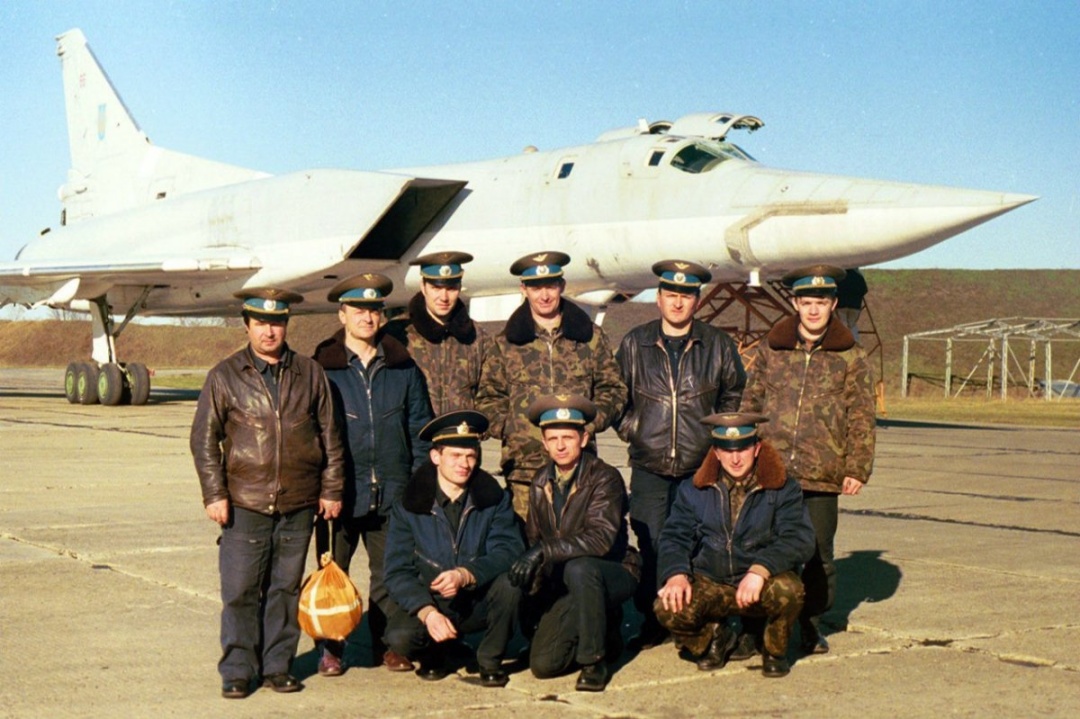
The Ukrainian army as it was in the early 1990s
These huge numbers of personnel, weaponry and equipment were obviously disproportionate to the then realities in Ukraine. External pressure and budgetary constraints prompted Ukraine to give up its nuclear weapons arsenal, sell off part of its military materiel and conduct a large-scale reduction of the army. How was this done? This was a matter of experience, which was not yet there, had yet to be gained.
In June 1992, the Verkhovna Rada of Ukraine ratified the Treaty on Conventional Armed Forces in Europe, under which Kyiv was supposed to reduce its inventory of tanks by 5,300 units, armored combat vehicles by 2,400 units, and combat aircraft by 477 units.
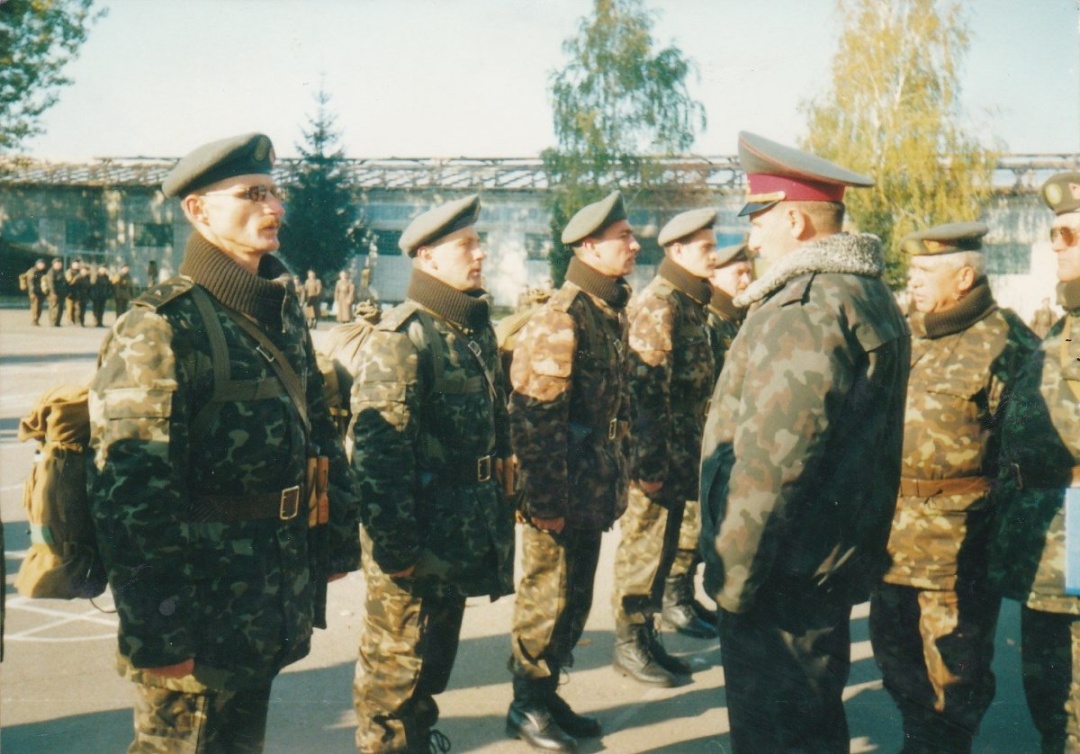
The Ukrainian army as it was in the early 1990s
One of the first joint conceptual documents of the Cabinet of Ministers of Ukraine and the Verkhovna Rada of Ukraine Committee on Defense and National Security was the Concept on Defense and Building up Armed Forces of Ukraine, which was enacted by the Verkhovna Rada of Ukraine Resolution No. 1659-XII, dated October 11, 1991. Two principles were already laid down at that time: the nation’s nuclear-free status and a commitment not to join any military alliance. Such a decision, which was designed to favor both the East and the West in terms of the approaches to building up the military, became characteristic for the whole troubled process until the spring of 2014.
However, during 1991-1996, despite a host of challenges, the foundations of the Armed Forces of Ukraine had been laid down, a vertical chain of command was set up in place in the military, and the state’s military machinery began to be brought in line with the emerging geopolitical realities.
Even so, a number of critical measures were impossible to implement due to both growing economic imbalances and the lack of geopolitical certainty among the Ukrainian leadership.
1997–2005: ARMY’S DOWNSIZING – EXCESSIVE AND TOO RAPID
The next phase of military build-up in Ukraine began with the adoption in January 1997 of the 2005 State Program on the Build-Up and Development of the Armed Forces of Ukraine, along with the approval of the Rules of Procedure of the Ministry of Defense of Ukraine and the General Staff of the Armed Forces of Ukraine. This marked an important milestone in the establishment of democratic civilian control over the military and all of the defense sector.
The country’s military and political leadership once again began correlating the directions of the defense reform and identifying new priorities for arms modernization. However, in conditions of chronic budget expenditure shortfalls, this all amounted to no more than a declaration of intentions. Nonetheless, certain transformations did occur.

1999 Independence Day Parade preparation
In 1998, due to the introduction of a new military-administrative division of Ukraine, military districts were reorganized into operational commands — operational-strategic entities designated to perform operational tasks, mobilization tasks and territorial defense tasks in peacetime and wartime in their respective jurisdictions, as well as to provide troops (units) located in their respective localities, regardless of their departmental subordination, with all types of provisions — technical, logistics, and medical among others. At the beginning of 1999, a transition was made to a new system of logistics provision based on location. This made it possible to streamline and reduce the number of logistics entities, ensure the integration of logistics resources, forces and capabilities and to enable their comprehensive and effective use for the benefit of all the entities within the Armed Forces of Ukraine.
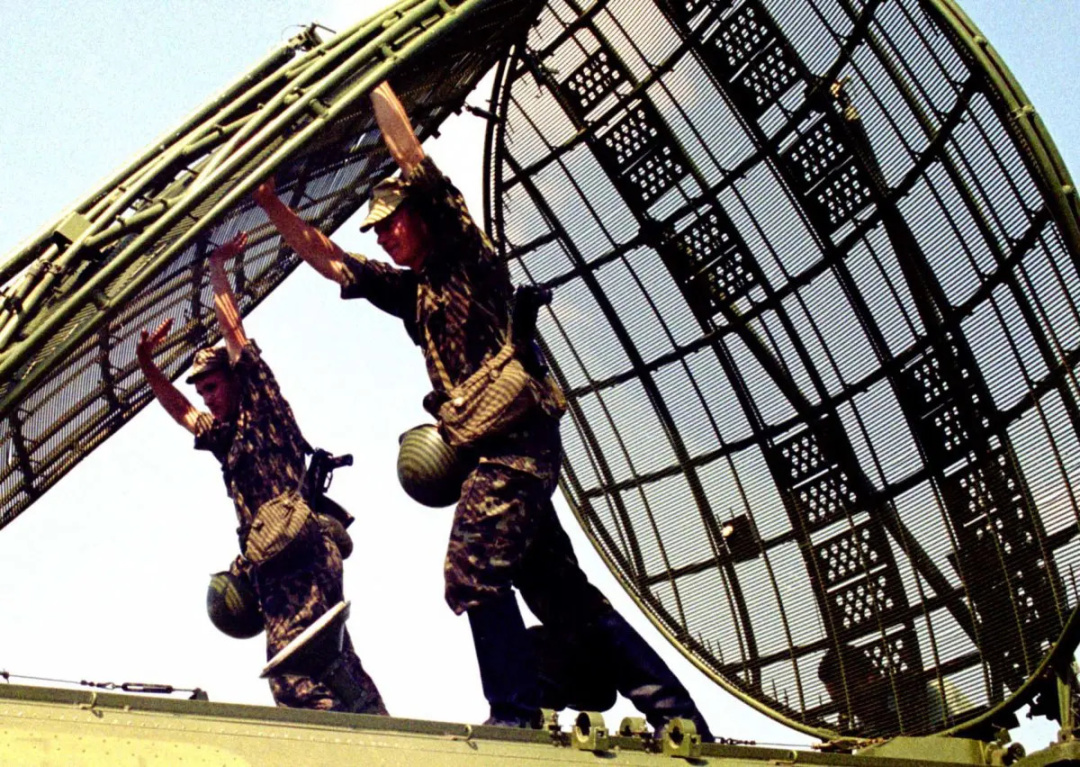
Soldiers from unit A0415 at the Separate Communications Brigade deploy the antennas of the R-417 tropospheric station (which is utilized to provide radio communication services for the General Staff), during the Brigade’s regular training; August 7, 2000; the village of Semypolky, Kyiv Oblast / Photo courtesy of Oleksandr Synytsia via UNIAN
During 2004-2005, the Air Force and Air Defense Force were merged into a new branch of the Armed Forces – the Air Force. Of the three operational commands, the operational commands West and South remained in place, while the operational command North was reorganized into the territorial directorate North. The Logistics Forces Command was organized, absorbing more than 50 military logistics units and sub-units.
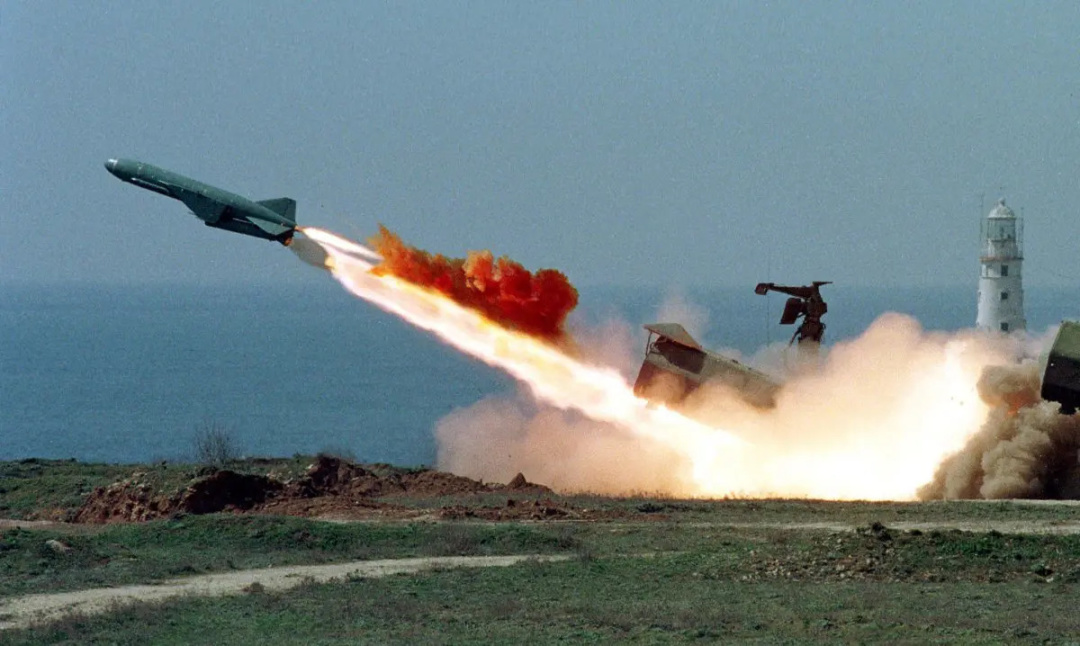
The first launch of the Ukrainian cruise missile “Termite” during joint Russo-Ukrainian naval exercises at Cape Tarkhankut (Crimea); April 17, 1998 / Photo Credit: Volodymyr Strumkovsky via UNIAN
The size of the Armed Forces continued to shrink. It was found feasible to maintain the army strength in peacetime at the level of 0.8-0.9% of the population (approx. 400-450,000 personnel). In December 1998, the Armed Forces size was set at 420,000 men, including 100,000 employed personnel. By the end of 2005, the army downsizing target had been overfulfilled as the army strength fell down to 245,000 men, including 65,000 civilian contractors.
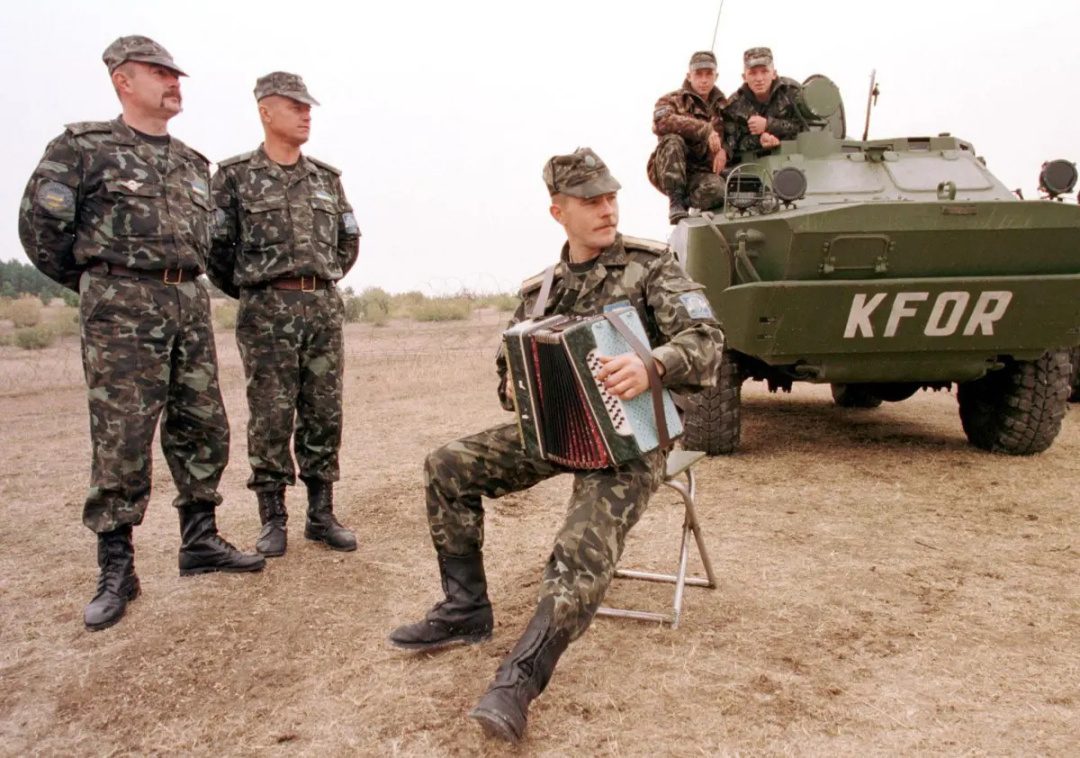
Ukrainian soldiers from NATO’s KFOR peacekeeping mission in Kosovo listen to their fellow playing the accordion at the unit’s camp outside of Skopje, Macedonia; October 22, 1999 / Photo Credit: Mykhailo Markiv via UNIAN
The following ratio of personnel numbers between the branches of the Armed Forces was legislatively established at up to 40 percent for the Ground Force, up to 24 percent for the Air Force, and up to 8 percent for the Naval Force, with the remainder 28 percent distributed between bodies of military command and control, institutions of military education and managerial entities.
2006-2013: ARMED FORCES SIZE “IN THE ABSENCE OF EXTERNAL THREATS”
During 2006-2011, the Armed Forces restructuring effort eventually led to their overall strength downsized to 192,000 men. That being said, that time saw the formation of Rapid Reaction Corps within the Ground Force, a transformation of the systems of military education, personnel recruitment and medical provision, and an expansion of the scope of international defense cooperation.
The Ground Force was transitioned from a three-layer structure (operational command-division-regiment) to two layers (operational command-brigade). In 2010, the Ground Force was made up of 17 brigade-size units (2 tank brigades, 8 mechanized brigades, 1 air assault brigade, 2 air mobile brigades, 1 missile brigade, 3 artillery brigades), 14 regiment-size independent units (1 mechanized regiment, 1 air mobile regiment, 2 special operations regimens, the Presidential Regiment, 3 rocket artillery regiments, 3 air defense missile regiments, 2 army helicopter regiments, 1 electronic warfare regiment), 9 independent combat logistics regiments (4 engineering regiments, 4 communication regiments, 1 radiological, nuclear, biological and chemical (RNBC) protection regiment), in addition to other separate regiment- and lower size units and entities, as well as the 169th Desna Training Center. In 2013, the size of the Ground Force amounted to 57,000 men. It had in its inventory 686 tanks, 72 combat helicopters, 2,065 armored combat vehicles, and 716 artillery gun systems.
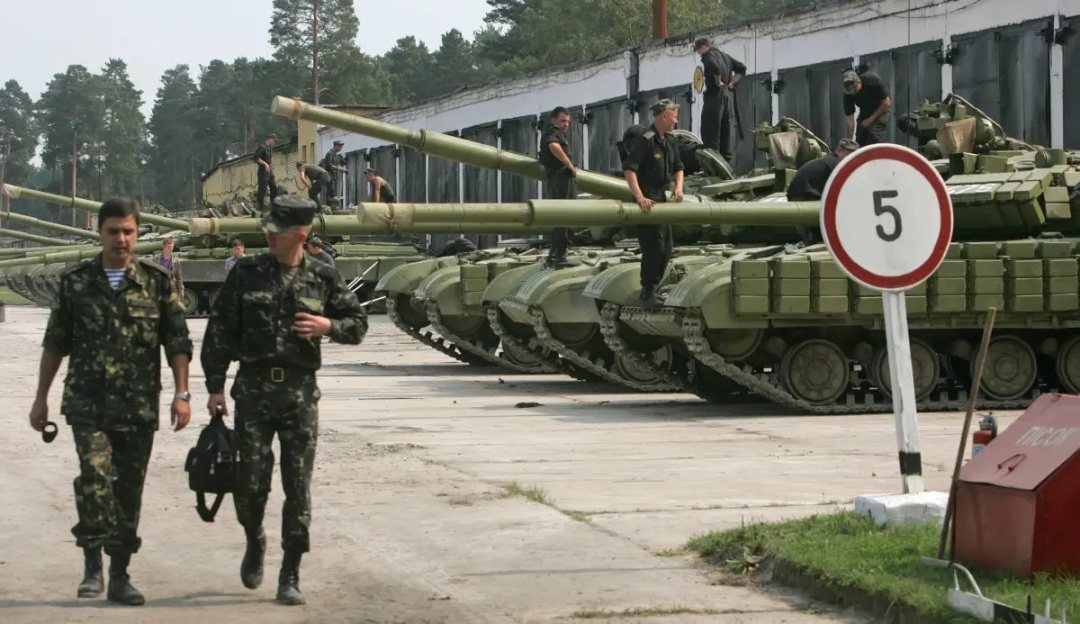
T-64 tanks from the AFU Ground Force’s 169th training center Desna, Chernihiv Oblast; September 3, 2012 / Photo Credit: Oleksandr Synytsia via UNIAN
In the Air Force, brigade became the core of a new organizational structure. As of 2013, the Air Force complement was made up of six brigades, one tactical aviation wing, 3 air transport brigades, one training brigade, and an independent Unmanned Aerial Vehicle (UAV) regiment. The Air Force additionally included 4 radar brigades, 4 air defense missile brigades, and 8 air defense missile regiments.
The core of the Naval Force was made up of naval surface ship brigades and several separate naval surface ship divisions, in addition to a naval aviation brigade and a coastal defense brigade.
The Armed Forces technical modernization was too slow to proceed, and especially so under Victor Yanukovych as president, this because not just of budgetary constraints, but more because bolstering the Armed Forces was not treated as priority by the Yanukovych administration’s government against the backdrop of the “absence of external threats to national security” (as stated by the country’s military strategy that was effective as of that time).
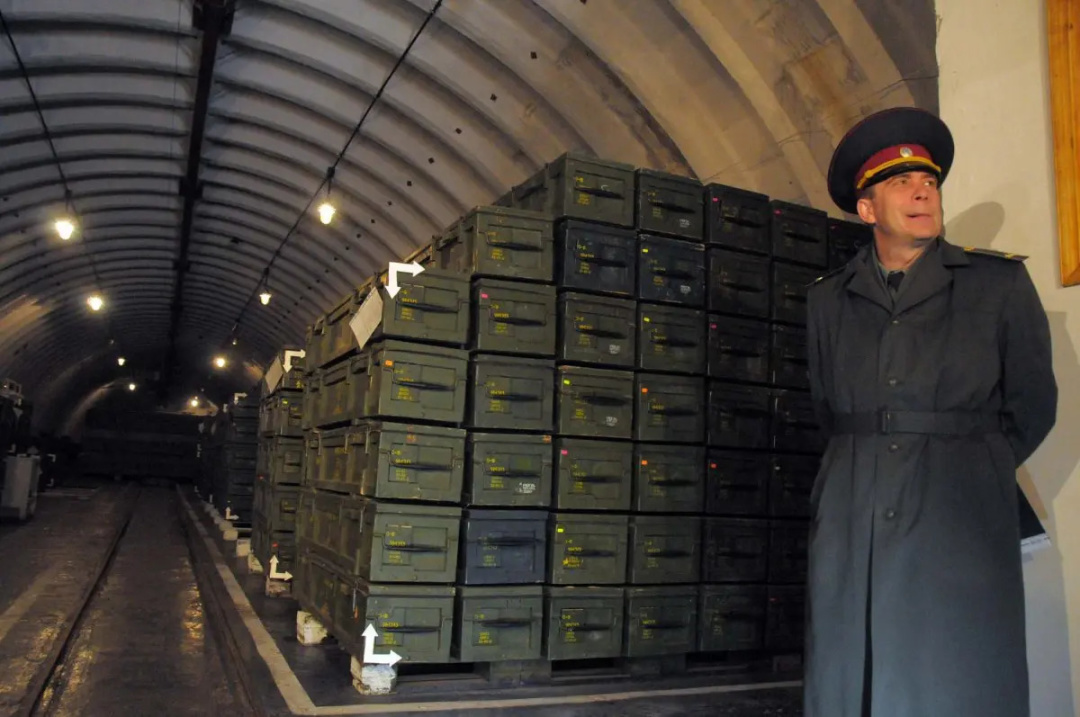
A Ukrainian army officer is seen here standing in a warehouse storing portable shoulder-fired surface-to-air missiles (MANPADS) at Arsenal No. 65 in Balakliya, Kharkiv Oblast; April 17, 2009 / Photo Credit: Volodymyr Andreyev via UNIAN
In 2013, the army saw the most drastic decline. Viktor Yanukovych enacted the state budget of Ukraine, which set the defense expenditure at less than 1 percent (sic!) of GDP. In fact, the collapse of the Ukrainian army became imminent at the behest of the Kremlin. Dmytro Salamatin and Pavlo Lebedev, who served as Ministers of Defense of Ukraine in 2012-2013 (2014), did not even make secret of their Russian citizenship.
The plans were devastating, which, if implemented at the behest of the Kremlin, would effectively leave Ukraine with nothing to defend itself as early as by 2015. In a short period of time, five air defense missile brigades were disbanded, three brigade-size units were reduced into regiments, and 12 air defense missile regiments were fully deactivated. In the Ground Force, the territorial directorate North was dismantled, while mechanized brigades were restructured organizationally to make them less combat capable.

Pavlo Lebedev, Viktor Yanukovych, Dmytro Salamatin. Photo via mil.gov.ua
The combat capability of the Armed Forces of Ukraine during that time was further affected by the trend towards the growing share of civilian employees serving in the army. Out of 45,000 men who signed contracts with the Defense Ministry in early 2013, just less than a third (15,000) came to serve in combat positions (including as few as 5,000 in Ground Force units).
During 1997-2013, in the Armed Forces of Ukraine, as decline continued in the number of personnel and in weapons arsenals, intentions regarding the Armed Forces transition to manning on a contract basis and modernization of the army with advanced weaponry and military equipment systems were announced but not followed through upon.
As of 2013, the Armed Forces of Ukraine were downsized to 165,000 men, including 44,600 civilian employees – the lowest level established officially. Of these, 57,000 men made up the complement of the Ground Force, armed with 686 T-64 tanks of various modifications, 72 Mi-8 and Mi-24 combat helicopters, 2,065 armored combat vehicles, and 716 artillery gun systems. The Ukrainian Navy included 1 warship of frigate-class, 7 warships of corvette-class, 2 missile craft, 2 landing craft, 2 command-and-control craft, 5 mine warfare craft, plus some 75 auxiliary vessels and harbor service craft, these being organized into two surface ship brigades and several separate squadrons.
2014-2021: A STRINGENT TEST THAT COULD NOT BE DONE TWICE
The year 2014 went down in history not only due to the success of the Revolution of Dignity, but also as the year that saw the onset of the revival of the Ukrainian army. Russia’s unlawful occupation of the Autonomous Republic of Crimea and the city of Sevastopol, along with the separatist movement in a significant portion of the Donetsk and Luhansk regions, which Moscow incited and supported militarily and organizationally, resulted in a violation of Ukraine’s territorial integrity and national sovereignty. A hybrid war was unleashed against the sovereign Ukrainian state.
After the introduction of the state of emergency, the Armed Forces of Ukraine, in the summer of 2014, had to engage in real-world combat operations against a well-armed and trained adversary whom our top military brass had never considered a potential enemy for Ukraine.
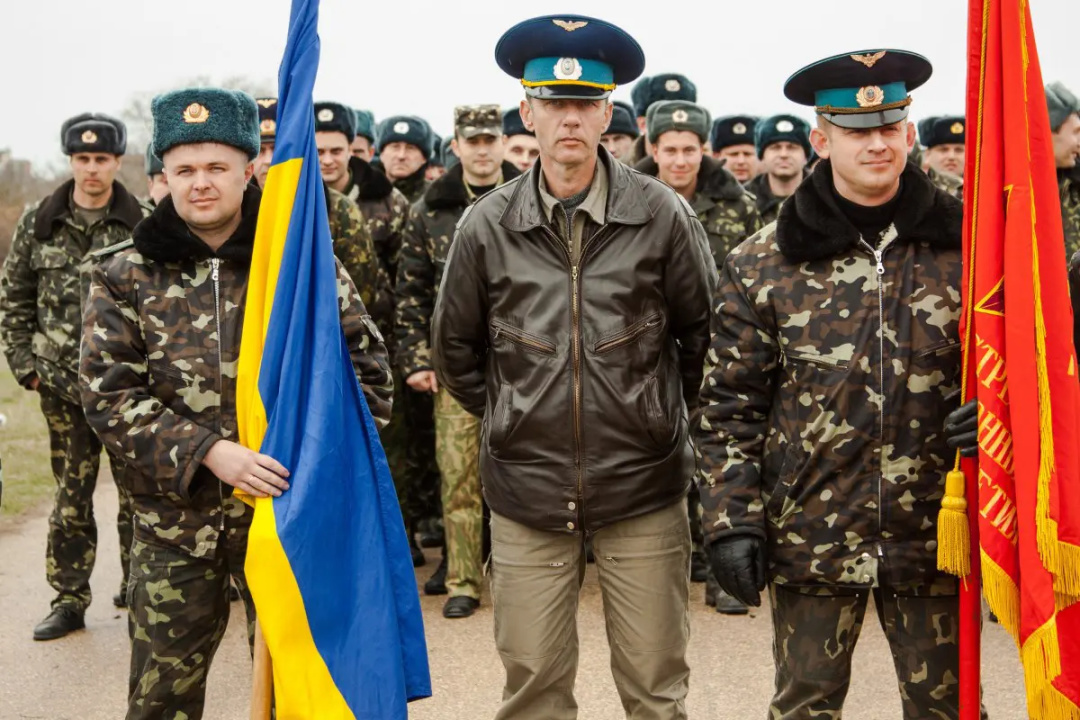
Officers and personnel from the AFU’s Tactical Aviation Regiment stationed at the Belbek airfield outside of Sevastopol city, Crimea, after it was seized by Russia’s military; March 4, 2014 /Photo Credit: Sasha Flock via UNIAN
The insidious seizure of the Crimea peninsula by Russia and the outset of Russia’s hybrid war in the Donbas had come as a severe trial to Ukraine’s Armed Forces. From the very inception the “Crimea crisis”, the Russian occupiers were doing their utmost to take away for their own use the weapons arsenals and military equipment inventories the Ukrainian army held in the peninsula. They resorted to blocking Ukrainian personnel access to military sites, garrisons and warships anchored on the roadstead.
Just a few Ukrainian units literally were able to leave Crimea on their own – these were mostly scouts from the 25th Independent Air Assault Brigade (who were on training exercises in Crimea), all of the border guard ships stationed in Kerch, as well as three aircraft (two An-26s and a Be-12), two helicopters (Ka-27 and Mi-14), which, on March 3, were able to reach mainland Ukraine, piloted by aircrews from the Ukrainian Navy’s 10th Naval Aviation Brigade.
Ukraine was able to take out part of its weapons and equipment inventories from Crimea. True enough, Russians did a good job making the weapons and equipment inoperable to the extent of irreparability. Overall, Russia returned Ukraine several aging and worn-out ships (3 warships and 32 auxiliary vessels), 59 airplanes and 23 helicopters, as well as a combined total of 1,438 motor vehicles, armored vehicles and specialized equipment.
The Russians kept for themselves all the small arms and ammunition, which, as it turned out later, ended up at the hands of unlawful armed groups in the Donbas.

Ukrainian Armed Forces soldiers are welcomed by Sloviansk residents after the city was retaken by Ukrainian forces in July 2014 / Photo via People’s Army
Russia’s war of aggression against Ukraine has already cost multiple human lives and huge economic losses. Ukrainian people mustered all their strength and mobilized all capabilities to defeat the aggressor. This was manifested particularly well in a wide-ranging volunteer movement in support of the army and in the influx of volunteers into defense and security forces.
The Armed Forces were reinforced with several waves of mobilization. The Armed Forces of Ukraine increased significantly in size – up to 275,000 men in February 2016. A number of units were organized from scratch, and the system of management in the army was streamlined to meet new realities. In particular, four operational commands – North, South, East, and West – were organized within the Ground Force. By 2020, the Ground Force had a complement of 30 combat brigades (2 tank brigades, 9 mechanized brigades, 4 motorized infantry brigades, 2 mountain assault brigades, 1 chasseur infantry brigade, 1 missile brigade, 2 rocket artillery brigades, 5 artillery brigades, 4 army aviation brigades), in addition to a number of independent regiment- and battalion-size units of different designations.
The defense of airports in Donetsk (242 days) and Luhansk (146 days), the battles of Debaltseve in the winter of 2015 became a genuine symbol of the dedication and bravery of Ukrainian warriors.
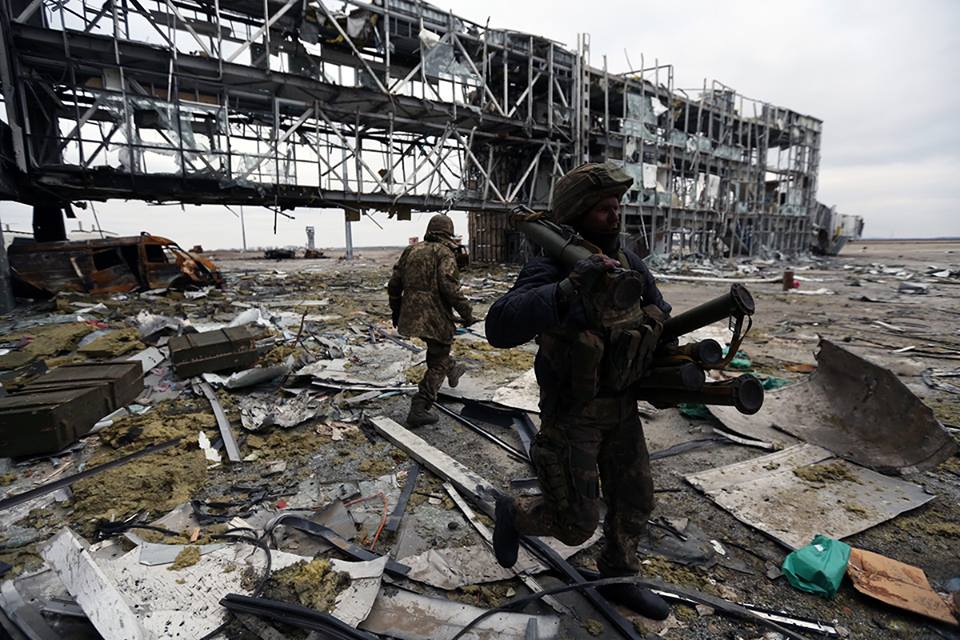
The Battle of Donetsk Airport, the Fall of 2014 / Photo Credit: Sergei Loiko
January 2016 saw the creation of a new separate branch of the Armed Forces of Ukraine — the Special Operations Force, comprised of 2 special operations regiments and several units of other designations, among them media and psychological operations and training. In 2019, the Ukrainian Special Operations Force was the first among all other branches of Ukraine’s military to achieve NATO interoperability and get certified to participate in allied operations.
The combat capability of the Airborne Assault Troops, which, likewise, hold a status as a separate branch of the military, has grown dramatically. The effort is underway to bolster the warfighting ability of the Air Force and to revive and build anew the Naval Force of Ukraine. Weapons and military equipment systems, both newly made and upgraded from legacy technologies, are being deployed in ever growing numbers.
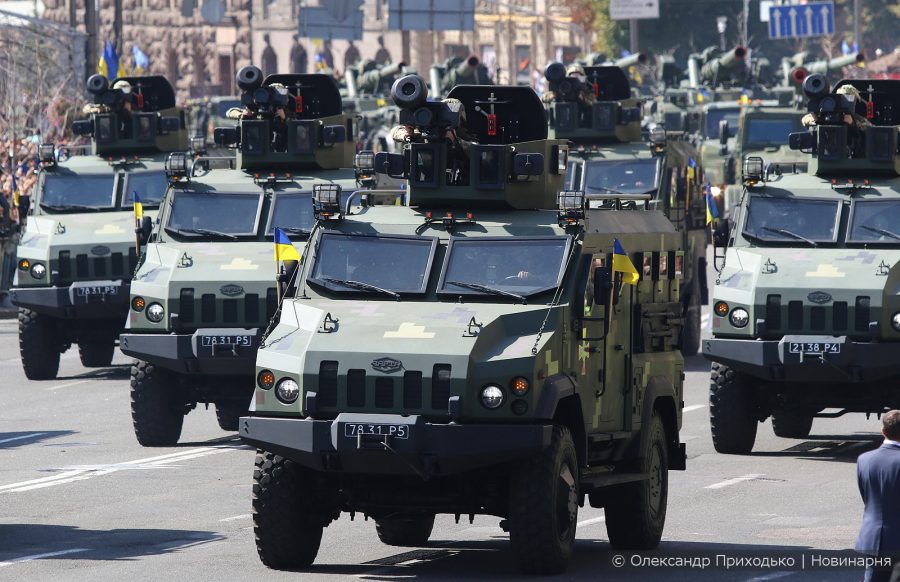
Javelin ATGMs are seen here displayed at the 2018 Independence Day military march-past, 24 August 2018
Increased attention is being paid to the creation of a missile shield as a deterrent against a potential aggressor. In March 2016, the tactical missile technology Vilkha entered the phase of testing and evaluation, followed by the R-360 anti-ship cruise missile system Neptune in January 2018. Work continues on the development and prototyping of the short-range tactical missile system to be known as Hrim-2 (‘Thunder-2’). The Air Force and Army Aviation are deploying upgraded modifications of Soviet-legacy warplanes, among them Su-25M1 ground attack aircraft, MiG-29MU1, MiG-29MU2, Su-27S1M, Su-27P1M, Su-27UB1M fighters, L-39M1 trainer, as well as Mi-8MSB-V and Mi-24PU1 helicopters. The An-70 military transport has entered the Ukrainian army’s inventory, the government placed orders for procurement of medium-payload An-178 military transport aircraft, and R&D continues on a number of other military aircraft projects, both manned and unmanned. The deployment of the Turkish-made Bayraktar TB2 MALE unmanned combat aerial vehicles — the first aircraft in this category to enter service with the Armed Forces of Ukraine — in early 2019 came as a major reinforcement to the Air Force’s warfighting ability.
The years from 2014 through 2021 saw a qualitative leap forward in the development of the Armed Forces’ artillery capabilities as vehicle-based counter-battery radar systems from allies and partners began to be deployed on the battlefield, along with a diversified range of UAV capabilities, which kicked off being utilized for artillery fire direction. Furthermore to this, the AFU’s warfighting capabilities have received a further boost courtesy of the advanced weapons and military equipment provided to Ukraine by Western partners.
New branches of the Armed Forces of Ukraine — – the Territorial Defense Force and the Unmanned Systems Force – were organized in 2022 and 2024, respectively, and commenced their operations.
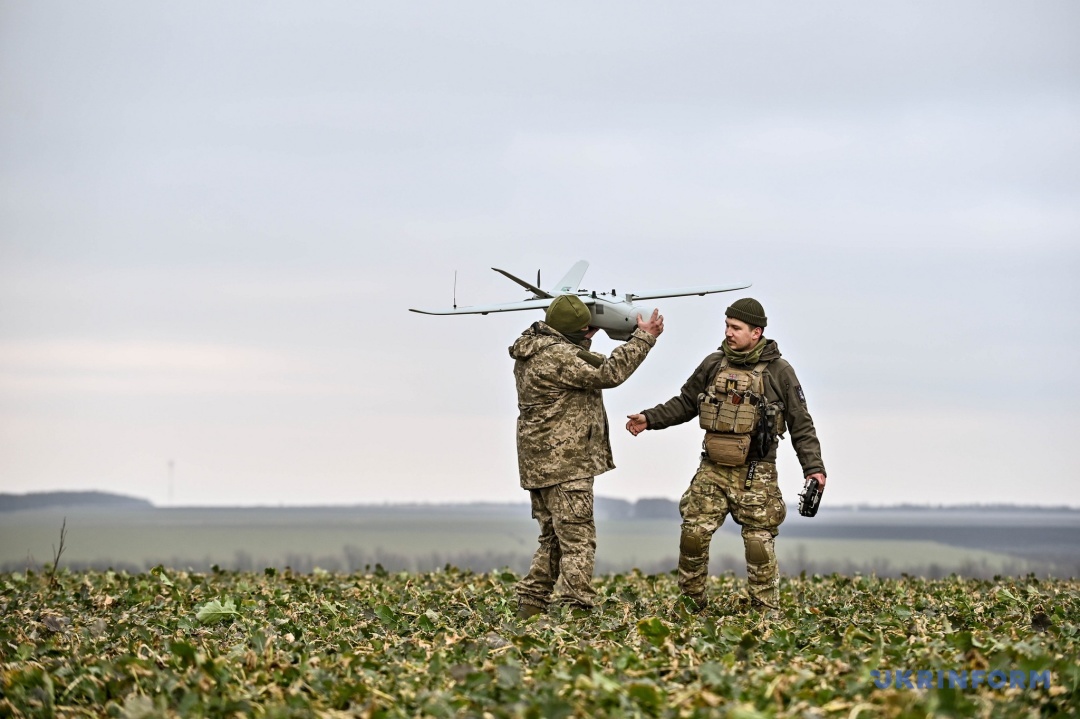
Reconnaissance UAV operators from the AFU’s 108th Territorial Defense Brigade are defending Ukraine from Russia’s war of aggression / Photo Credit: Dmytro Smolenko via Ukrinform
The build-up of a new army for Ukraine relies on two basic criteria, which are the achievement of NATO interoperability and sufficient budgetary provision. The progress of the latter is most conspicuous as the country’s defense expenditure for FY2024 grew to reach 15.2 percent of the gross domestic product, from a meager 1 percent of GDP in 2013. The work towards achieving NATO’s interoperability objective kicked off in 2016, and, by early 2021, bodies of military command-and-control had been transformed to achieve operability with NATO Common Joint Staff system (J-structure).
33: THE AGE OF MATURITY, TRIALS AND SUCCESSES
President Volodymyr Zelensky, in an interview with the German TV channel ARD, referred to Ukraine’s military as a “million-strong army” (it’s current size actually amounts to some 880,000 men). By a curious coincidence, that figure is almost the same as the size the Ukrainian army had at the onset of independence in 1991, having passed the path from a one-million-army back to a one-million-army.
The 33-year history of Ukraine’s Armed Forces records an amazing path from being known to nobody and trusted by anybody (except Ukrainians themselves) just three years ago to achieving global renown for their resilience, bravery and determination to win. During the 1,016 days of fighting the aggressor state, the Ukrainian Armed Forces have taken out 750,000 invaders dead and severely wounded, shot down 369 airplanes and 329 helicopters, killed 28 ships and a submarine, wiped out 9,506 tanks, 19,472 armored combat vehicles, 21,023 artillery gun systems, 1,253 MLRS, 1,020 air defense radars and missile launchers, downed nearly 20,000 tactical-operational UAVs and 2,855 cruise missiles, destroyed 30,843 motor vehicles and fuel tanks, in addition to 3,630 pieces of specialized equipment.
Today each and every Ukrainian are proud to say that they trust the Armed Forces of Ukraine. In the most difficult times, thousands of the Armed Forces’ soldiers showed themselves heroically in the battles for Ukrainian independence and territorial integrity. Demonstrating the best features of human dignity and professional zeal, the Ukrainian military confidently stand up to the many times superior enemy and emerge victorious.
As the Armed Forces of Ukraine turned 33 years old, it could be said with certainty that they have already won their major victory – the trust of the people they defend. The armed forces are the most trusted institution in Ukraine with an approval ranking of 91.5 percent, according to a September 2024 national survey.
Mykola Zoryk, Kyiv
Source: AFU Turns 33: A Path Form a Million-Strong Army Back to a Million-Strong Army


